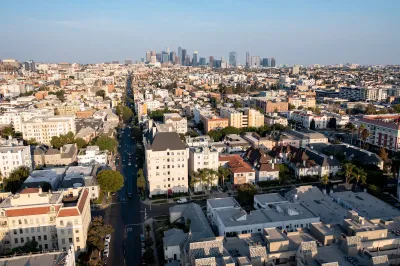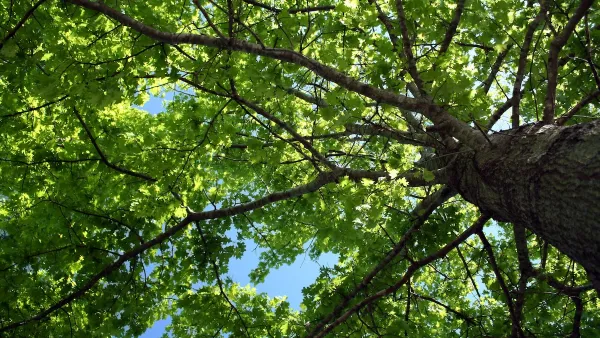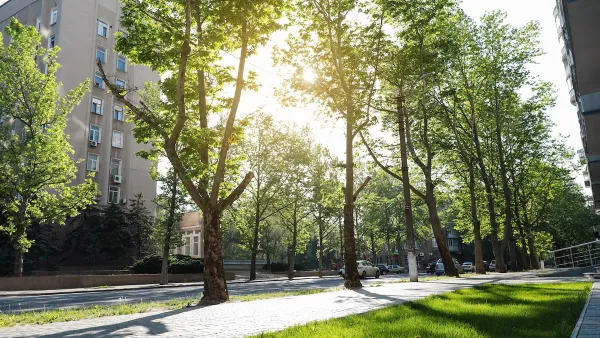Koreatown is one of Los Angeles's densest and most park-poor communities. A privately funded tree planting initiative will bring some much needed greenery and shade to the area.

Shade equity is typically defined as fairness or justice in the way people have access to tree shade in their neighborhood regardless of factors like race, ethnicity, income, etc. As reported by Josie Huang, there is now a privately-funded tree planting initiative to bring some greenery and shade to Koreatown in Los Angeles.
To date, Koreatown Youth + Community Center has raised over $600,000 as part of its plan to speed up the rate of tree planting in the neighborhood, most of the money so far coming from a K-Pop impresario who has made L.A. his second home. The non-profit currently plants about 1,000 trees annually through a $1 million contract with the city, and expects to add another 1,000 trees in the coming year through the privately-funded initiative. The hope is to exceed a $1 million fundraising goal for the first year, so the program can continue for several years.
Koreatown is one of Los Angeles' most park poor and densest communities. According to the 2016 L.A. Countywide Parks Needs Assessment, Koreatown only has 0.1 acres of parkland per 1,000 residents which is significantly lower than the countywide average of 3.3 acres per 1,000 residents. Also, only 39% of Koreatown residents live within walking distance (half-mile) of a park, which is noticeably below the countywide average of 49%.
FULL STORY: In Tree-Starved Koreatown, More Greenery On Its Way

National Parks Layoffs Will Cause Communities to Lose Billions
Thousands of essential park workers were laid off this week, just before the busy spring break season.

Retro-silient?: America’s First “Eco-burb,” The Woodlands Turns 50
A master-planned community north of Houston offers lessons on green infrastructure and resilient design, but falls short of its founder’s lofty affordability and walkability goals.

Delivering for America Plan Will Downgrade Mail Service in at Least 49.5 Percent of Zip Codes
Republican and Democrat lawmakers criticize the plan for its disproportionate negative impact on rural communities.

Test News Post 1
This is a summary

Test News Headline 46
Test for the image on the front page.

Balancing Bombs and Butterflies: How the National Guard Protects a Rare Species
The National Guard at Fort Indiantown Gap uses GIS technology and land management strategies to balance military training with conservation efforts, ensuring the survival of the rare eastern regal fritillary butterfly.
Urban Design for Planners 1: Software Tools
This six-course series explores essential urban design concepts using open source software and equips planners with the tools they need to participate fully in the urban design process.
Planning for Universal Design
Learn the tools for implementing Universal Design in planning regulations.
EMC Planning Group, Inc.
Planetizen
Planetizen
Mpact (formerly Rail~Volution)
Great Falls Development Authority, Inc.
HUDs Office of Policy Development and Research
NYU Wagner Graduate School of Public Service





























